Infraclass Neognathae Scientific name Buteo Phylum Chordata | Subclass Neornithes Superorder Neoaves Higher classification Buteoninae | |
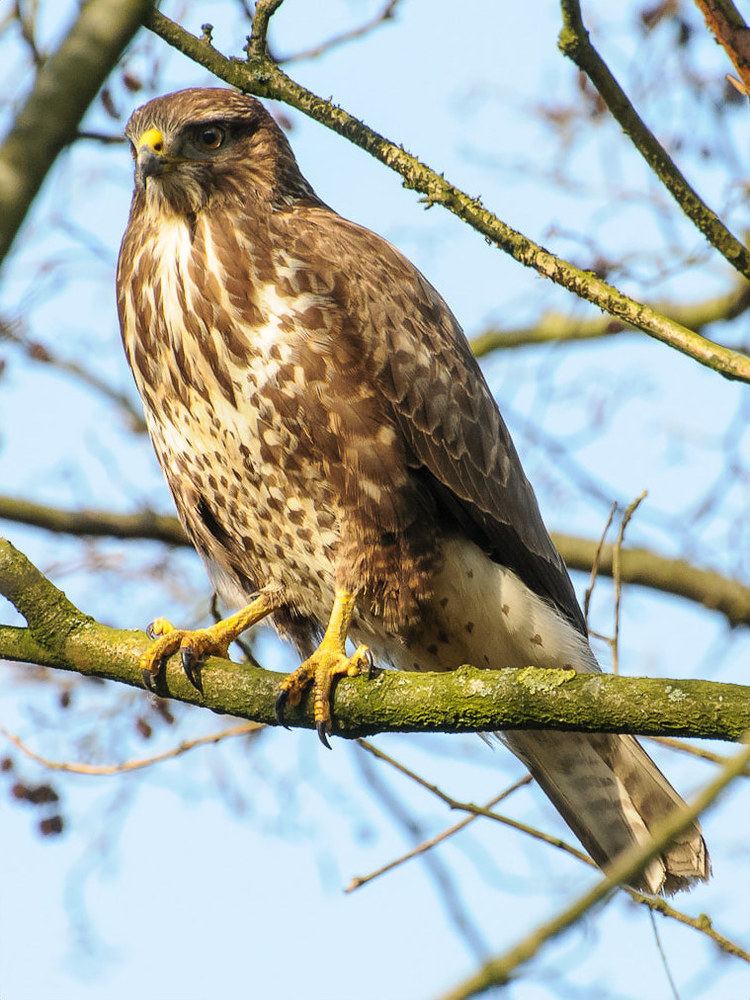 | ||
Wingspan Common buzzard: 1.1 – 1.4 m Length Common buzzard: 40 – 58 cm, Red-tailed hawk: 45 – 65 cm Lower classifications Common buzzard, Red‑tailed hawk, Rough‑legged buzzard, Long‑legged buzzard, Red‑shouldered hawk | ||
Buteo is a genus of medium to fairly large, wide-ranging raptors with a robust body and broad wings. In the Old World, members of this genus are called "buzzards", but "hawk" is used in North America (Etymology: Buteo is the Latin name of the common buzzard). As both terms are ambiguous, buteo is sometimes used instead, for example, by the Peregrine Fund.
Contents
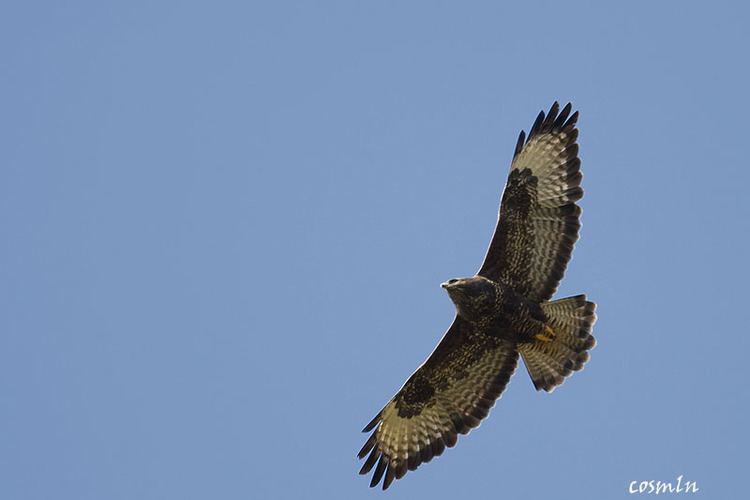
Characteristics

Buteos are fairly large birds. Total length can vary from 30 to 71 cm (12 to 28 in) and wingspan can range from 67 to 161 cm (26 to 63 in). The lightest known species is the roadside hawk, at an average of 269 g (9.5 oz) although the lesser known white-rumped and Ridgway's hawks are similarly small in average wingspan, at around 75 cm (30 in), and average length, at around 35 cm (14 in) and in standard measurements. The largest species in length and wingspan is the upland buzzard, which averages around 65 cm (26 in) in length and 152 cm (60 in) in wingspan. The upland is rivaled in weight and outsized in foot measurements and bill size by the ferruginous hawk. In both of these largest Buteos, adults typically weigh over 1,200 g (2.6 lb) and, in mature females, can exceed a mass of 2,000 g (4.4 lb). All Buteos may be noted for their broad wings and sturdy builds. The Buteos frequently soar on thermals at mid-day over openings and are most frequently seen while doing this. The flight style varies based on the body type and wing shape and surface size. Some long-winged species, such as rough-legged buzzards and Swainson's hawks, have a floppy, buoyant flight style, while others, such as red-tailed hawks and rufous-tailed hawks, tend to be relatively shorter-winged, soaring more slowly and flying with more labored, deeper flaps. Most small and some medium-sized species, from the roadside hawk to the red-shouldered hawk, often fly with an alternation of soaring and flapping, and thus may be reminiscent of an Accipiter hawk in flight but are still relatively larger-winged, shorter-tailed, and soar more extensively in open areas than Accipiters do. Buteos inhabit a wide range of habitats across the world but tend to prefer some access to both clearings, which provide ideal hunting grounds, and trees, which can provide nesting locations and security.
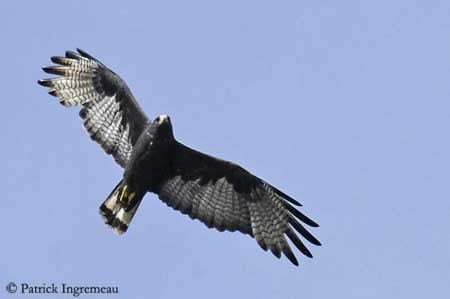
All Buteo species are to some extent opportunistic when it comes to hunting, and will prey on almost any type of small animal as it becomes available to them. However, most have a strong preference for small mammals, mostly rodents. Rodents of almost every family in the world are somewhere predated by Buteo species. Since many rodents are primarily nocturnal, most Buteos mainly hunt rodents that may be partially active during the day, which can include squirrels and chipmunks, voles and gerbils. More nocturnal varieties are hunted opportunistically and may be to be caught in the first or last couple hours of light. Other smallish mammals, such as shrews, moles, pikas, bats and weasels, tend to be minor secondary prey, although can locally be significant for individual species. Larger mammals, such as rabbits, hares, and marmots, including even adult specimens weighing as much as 2 to 3 kg (4.4 to 6.6 lb), may be hunted by the heaviest and strongest species, such as ferruginous, red-tailed and white-tailed hawks. Birds are taken occasionally, as well. Small to mid-sized birds, i.e. passerines, woodpeckers, waterfowl, pigeons and gamebirds, are most often taken. However, since the adults of most smaller birds can successfully outmaneuver and evade Buteos in flight, much avian prey is taken in the nestling or fledgling stages or adult birds if they're previously injured. An exception is the short-tailed hawk, which is a relatively small and agile species and is locally a small-bird-hunting specialist. Other prey may include snakes, lizards, frogs, salamanders, fish, and even various invertebrates, especially beetles. In several Buteo species found in more tropical regions, such as the roadside hawk or gray-lined hawk, reptiles and amphibians may come to locally dominate the diet. Swainson's hawk, despite its somewhat large size, is something of exceptional insect-feeding specialist and may rely almost fully on crickets and dragonflies when wintering in southern South America. Carrion is eaten occasionally by most species, but is almost always secondary to live prey. The importance of carrion in the Old World "buzzard" species is relatively higher since these often seem slower and less active predators than their equivalents in the Americas. Most Buteo species seem to prefer to ambush prey by pouncing down to the ground directly from a perch. The secondary approach in many is that prey is spotted from a great distance while soaring and is set down upon while circling down to the ground.
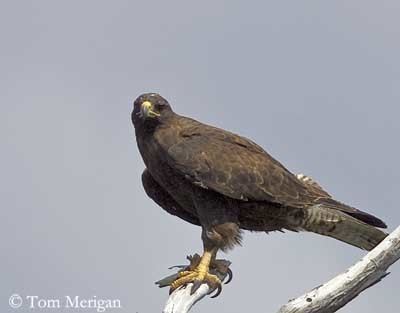
Buteos are typical accipitrids in most of their breeding behaviors. They all build their own nests, which are often constructed out of sticks and other materials they can carry. Nests are generally located in trees, which are generally selected based on large sizes and inaccessibility to climbing predators rather than by species. Most Buteos breed in stable pairs, which may mate for life or at least for several years even in migratory species in which pairs part ways during winter. Generally from 2 to 4 eggs are laid by the female and are mostly incubated by her, while the male mate provides food. Once the eggs hatch, the survival of the young is dependent upon how abundant appropriate food is and the security of the nesting location from potential nest predators and other (often human-induced) disturbances. As in many raptors, the nestlings hatch at intervals of a day or two and the older, strong siblings tend to have the best chances of survival, with the younger siblings often starving or being handled aggressively (and even killed) by their older siblings. The male generally does most of the hunting and the female broods, but the male may also do some brooding while the female hunts as well. Once the fledgling stage is reached, the female takes over much of the hunting. After a stage averaging a couple of weeks, the fledglings take the adults increasing indifference to feeding them or occasional hostile behavior towards them as a cue to disperse on their own. Generally, young Buteos tend to disperse several miles away from their nesting grounds and wander for one to two years until they can court a mate and establish their own breeding range.
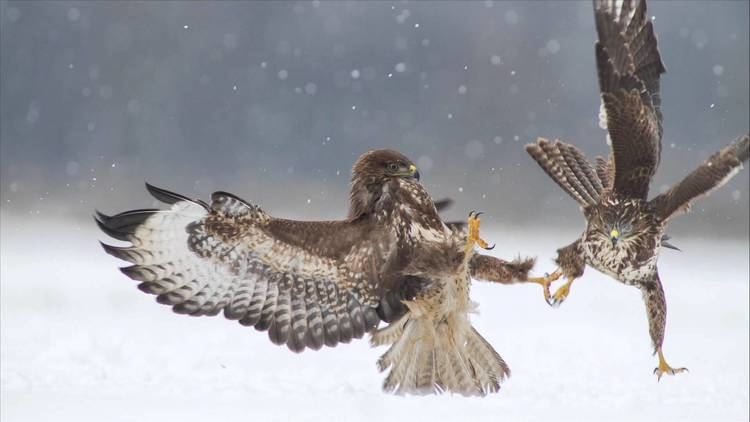
The Buteo hawks include many of the most widely distributed, most common, and best-known raptors in the world. Examples include the red-tailed hawk of North America, the common buzzard of Eurasia, and the roadside hawk of tropical Central and South America. Most Northern Hemisphere species are at least partially migratory. In North America, species such as broad-winged hawks and Swainson's hawks are known for their huge numbers (often called "kettles") while passing over major migratory flyways in the fall. Up to tens of thousands of these Buteos can be seen each day during the peak of their migration. Any of the prior mentioned common Buteo species may have total populations that exceed a million individuals. On the other hand, the Socotra buzzard and Galapagos hawks are considered vulnerable to extinction per the IUCN. The Ridgway's hawk is even more direly threatened and is considered Critically Endangered. These insular forms are threatened primarily by habitat destruction, prey reductions and poisoning. The latter reason is considered the main cause of a noted decline in the population of the more abundant Swainson's hawk, due to insecticides being used in southern South America, which the hawks ingest through crickets and then die from poisoning.
Taxonomy and systematics

The genus Buteo was erected by the French naturalist Bernard Germain de Lacépède in 1799 by tautonymy with the specific name of the common buzzard Falco buteo which had been introduced by Carl Linnaeus in 1758.
Species in taxonomic order
Fossil record
A number of fossil species have been discovered, mainly in North America. Some are placed here primarily based on considerations of biogeography, Buteo being somewhat hard to distinguish from Geranoaetus based on osteology alone:
An unidentifiable accipitrid that occurred on Ibiza in the Late Pliocene/Early Pleistocene may also have been a Buteo. If this is so, the bird can be expected to aid in untangling the complicated evolutionary history of the common buzzard group.
The prehistoric species "Aquila" danana, Buteogallus fragilis (Fragile eagle), and Spizaetus grinnelli were at one time also placed in Buteo.
